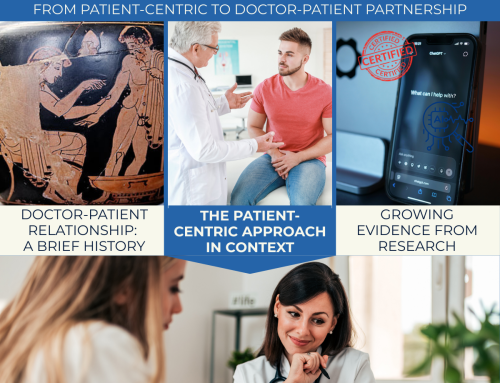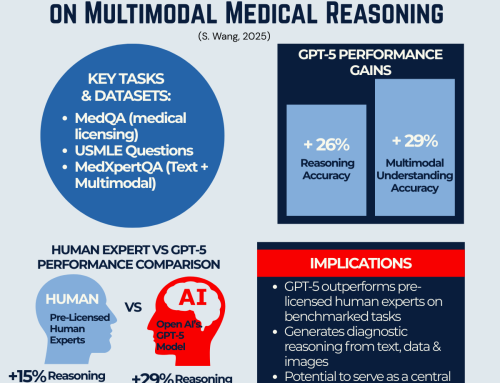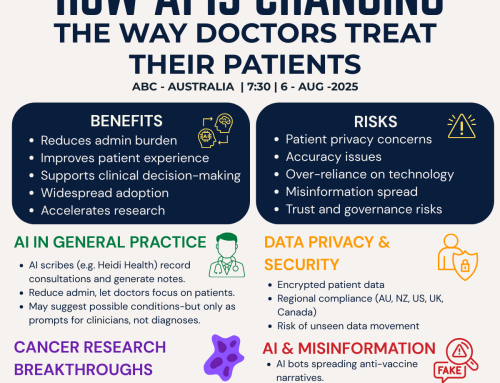Beyond the Caution: How Healthcare Leaders Can Harness GenAI’s Potential While Managing Its Risks
A critical reflection on “Challenges for Implementing Generative Artificial Intelligence (GenAI) into Clinical Healthcare” and why a shift in mindset is urgently needed.
The healthcare sector stands at the threshold of a technological shift—one that could redefine patient care, clinician engagement, and system efficiency. The recent review by Roberts et al. (2025), “Challenges for Implementing Generative Artificial Intelligence (GenAI) into Clinical Healthcare”, offers a well-reasoned examination of both the potential and pitfalls of GenAI in clinical practice.
Their article outlines the risks we’ve come to expect in AI discussions: hallucinations, performance drift, regulatory uncertainty, medico-legal ambiguity, workforce disruption, and public trust issues. It is a thorough and thoughtful contribution, but one that adopts a cautious lens, perhaps overly so for this pivotal moment.
As healthcare leaders, innovators, and practitioners, we must acknowledge these risks while ensuring they do not paralyse our pursuit of meaningful innovation. The future belongs to those prepared to move beyond caution and lead with clarity, foresight, and practical experimentation.
go to: | Start | Top of This Section | End
Key Insights from the Roberts et al. Review
1. Recognising the Opportunities of GenAI
Roberts et al. rightfully highlight GenAI’s transformative potential:
- Enhanced clinical decision-making support.
- Reduction of administrative burdens through automation.
- Improved capacity to manage healthcare system overload.
GenAI’s unique ability to process natural language, apply probabilistic reasoning, and scale with consistency makes it particularly suited for healthcare’s complex information environments.
2. Understanding the Challenges, But Not Being Deterred
The article underscores familiar concerns:
- Technical Risks: Hallucinations, inconsistency, and unpredictability.
- Regulatory and Legal Hurdles: Unclear pathways for approval and liability.
- Human Factors: Fear of job displacement, resistance to change, automation bias.
- Public Trust and Governance: Concerns over fairness, transparency, and cybersecurity.
While valid, these should be viewed as design challenges, not deal-breakers.
go to: | Start | Top of This Section | End
The Critical Shift in Mindset: From Risk Aversion to Responsible Innovation
The healthcare industry must evolve beyond a defensive posture toward AI. Leaders need to adopt a mindset of responsible experimentation—where innovation, patient engagement, and clinician empowerment happen in tandem with governance and risk management.
This requires:
- Viewing regulatory processes as enablers of trust, not barriers to action.
- Co-designing AI solutions with clinicians and patients to ensure usability and adoption.
- Recognising that AI is a collaborator—not a replacement—for clinical expertise.
- Embracing the role of citizen developers, researchers, and frontline innovators in shaping AI’s role in care delivery.
go to: | Start | Top of This Section | End
Harnessing GenAI for Immediate Opportunities
The time is ripe for practical applications that benefit both patients and clinicians, including:
- Patient Education and Self-Management Tools
- Standardised AI-Assisted Health Information Delivery
- Administrative Task Automation
- Clinical Decision Support for Routine Cases
We can and you should be piloting these solutions now, working collaboratively with patients, healthcare professionals, and technology partners.
go to: | Start | Top of This Section | End
Join the Conversation and Shape the Future
This review is the first step in a broader dialogue about how we shift from highlighting barriers to unlocking opportunities.
We invite you to join our Aligning for Excellence – Insider Review & Launch Circle on Facebook—a community where healthcare professionals, managers, researchers, and innovators come together to explore, experiment, and exchange ideas about leveraging AI for better care delivery.
👉 Join here: [Aligning for Excellence]
Stay tuned for the next article in this series:
“Moving Beyond the Risks: Practical Opportunities for AI in Clinical Healthcare Today”
go to: | Start | Top of This Section | End





